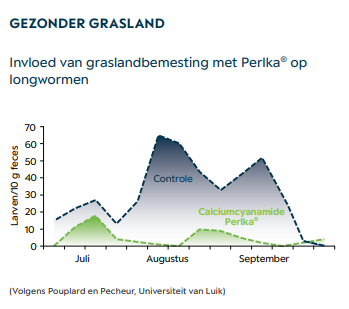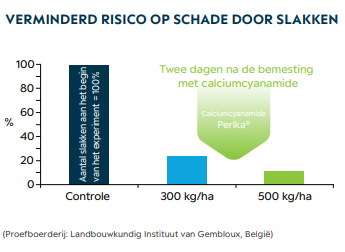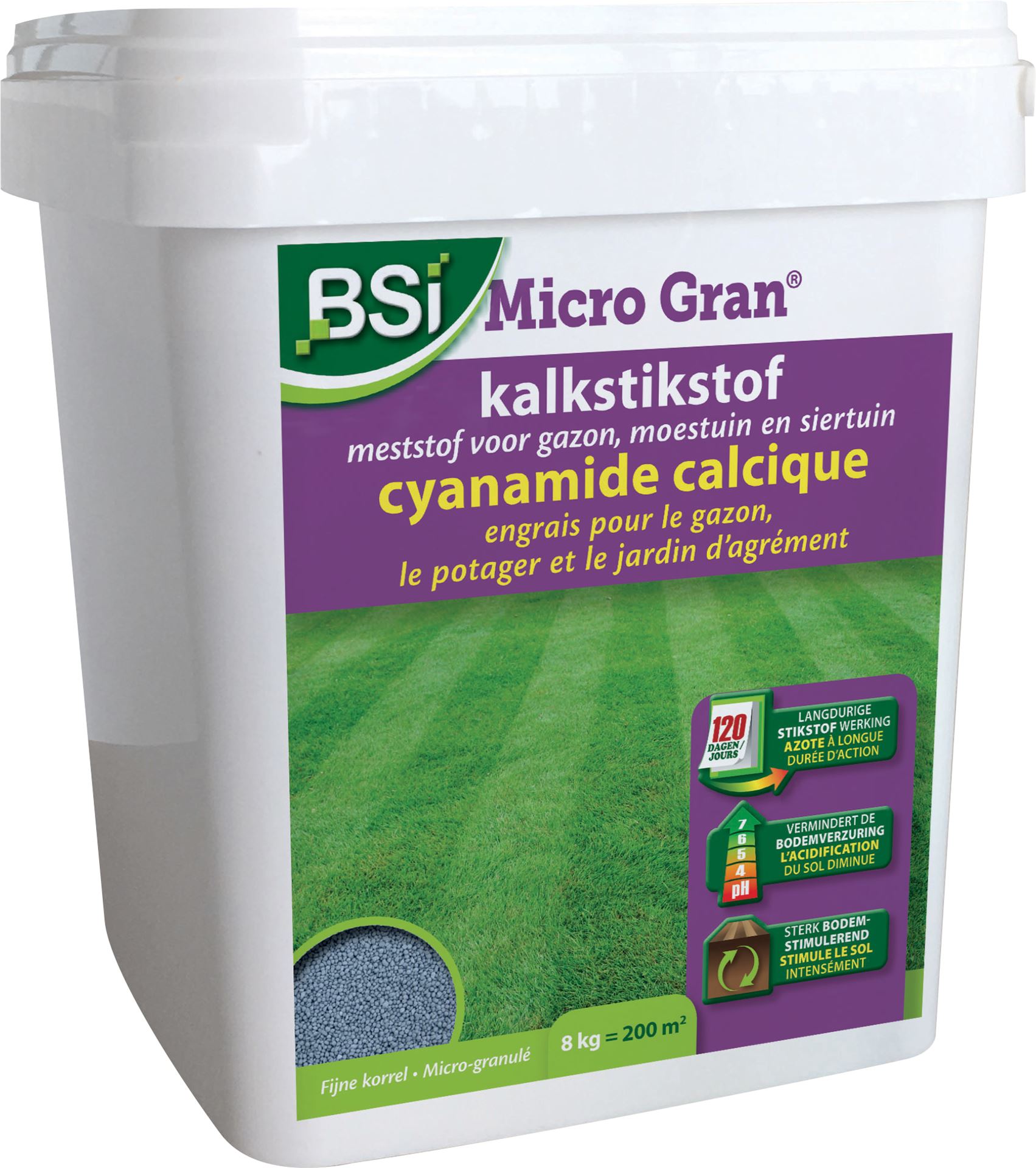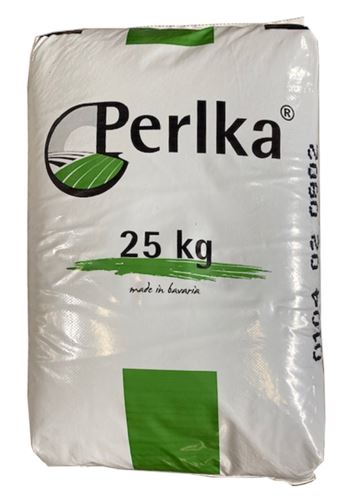
Lime cyanamide a wonder product for the (vegetable) garden or not
Lime cyanamide is a slow-acting and nitrogen-rich fertiliser. Besides nitrogen, this product also contains lime. 1 product with different purposes, nice and easy you would think! But lime cyanamide is a delicate product. Improper use can have very pernicious consequences for your (vegetable) garden. Moreover, there is a lot of misunderstanding about calcium cyanamide. High time to firmly clarify some issues.
Nitrogen and lime in 1
Lime cyanamide delivers nitrogen slowly and evenly to the soil. The lime in the fertiliser increases the pH value. Due to the combination of these 2 substances, the result is quickly visible. The main advantage of lime cyanamide is its price. Perhaps this is also why this fertiliser is so well known. You fertilise and lime with 1 product, making it ideal for impoverished, acidic soils and your wallet.
Many nitrogen compounds tend to acidify the soil. If the soil becomes too acidic, extra lime must be added to compensate for its negative effects on soil life and structure. Lime cyanamide from Perlka, on the other hand, contains (as the term gives away) extra lime to add to the soil ánd has readily available calcium for healthy plant growth.
Careful use
Lime cyanamide should be carefully handled. Always follow the indicated dose and safety instructions carefully. You really don't need much (general dose for lawns is ± 2 kg/100 m²). Do not use this product on a young lawn and/or in warm, sunny weather, as your new lawn could burn. Also, if used incorrectly (too high a dose or not distributed properly), your lawn could burn very quickly.
- Do NOT use lime cyanamide on wet grass. If the grass is wet during/immediately after treatment, the risk of burning the lawn is extremely high.
- Do not spread lime cyanamide in the morning. Your lawn will still be wet due to dew.
- Do not spread it on a changeable day. The grass should not get wet for 6 hours after treatment.
- Do NOT use calcium cyanamide when temperatures are too hot (above 25°C). The warmer, the faster the effect, but this also increases the risk of burning.
- DO use lime cyanamide in the late afternoon or evening if it is going to rain in the following days. If it does not rain in the days following the treatment, you should spray extensively for a few days.
Would you like to use lime cyanamide in your lawn? If so, test a small area first, for example, before treating your entire lawn. In fact, we have already had several customers where the lawn was completely burnt due to too heavy a dose and/or use in the wrong weather conditions.
Is the purpose maintenance? Then rather use a fertiliser such as Viano 4-in-1 or BSI Green Star, which contains a (small) dose of lime cyanamide instead of pure lime cyanamide. The timing of lime cyanamide administration is also essential. For this, it is important to understand the action of this product:
- Initial action:
Under the influence of moisture in particular, the calcium cyanamide will start to react. During this phase, which lasts around 2 weeks, it is important that this process does not stop. This usually happens when the grain gets dry. You can avoid this by humidifying and working the fertiliser into the soil.
- Second action:
After the first reaction, the nitrogen will be released slowly, thus giving you a long-term fertilisation of about 2 months. So this product should always be used in moist and not too warm conditions. Sprinkle the fertiliser at the latest two weeks before sowing or planting, then work in with a rake. Keep the soil slightly moist for the first two weeks after treatment!
Kalkcyanamide van Perlka staat bekend om het gelijkmatig, uitgebalanceerd en langdurig effect. Het kan hierdoor zeker 6 tot 8 weken in de bodem blijven in een stabiele ammoniumvorm. De gewassen kunnen hierdoor meer ammonium en minder nitraat opnemen.
A healthier soil without weeds or pests
Lime cyanamide is often used to fight weeds in the (kitchen) garden. However, you can not see kalkcyanamide as a true weed fighter. Indeed, it does not kill non-deep-rooting weeds and mosses but provides increased competitiveness against weeds.
The same effect occurs with pests such as grubs, leatherjackets or snails. Kalkcyanamide is a frequently used remedy against pesky slugs and grubs. Many think that it will kill these insects, but this is not true. Kalkcyanamide creates a soil that is not inviting to snails or other pest insects. Thus, the substances do not kill pests as such, but keep them away.


Another misconception is its danger to birds. Kalkcyanamide is not dangerous for birds in a direct way. However, birds can come into contact with (an excess of) lime cyanamide in an indirect way. If a bird eats leatherjackets or grubs that were exposed to a soil dusted with calcium cyanamide, this enters the bird's system. An excess of this does harm.
The advantages and disadvantages at a glance
➖ very precise (can burn the lawn) and gentle to use
Conclusion
Many make lime cyanamide sound like a miracle product for your garden. However, there is a big but! Kalkcyanamide may have many benefits but it can also cause serious damage to your garden through burning and misuse. So, as always, it is a trade-off: do you want to garden ecologically? Then you better not use this pesticide. The production of calcium cyanamide requires a lot of energy, which is why it is banned in organic farming. However, do you want a cheap all-in-one product to make (vegetable) gardening easy? Then lime cyanamide is ideal. So it can be a good and useful tool, but be sure to respect the stated dose and safety precautions!

Tip from Marcel
Adding lime cyanamide to the compost pile will speed up the composting process. Odour nuisance will also decrease.
More info? Receive all our gardening tips directly in your mailbox!
We'll only email you handy facts, green advice and our best promotions & discounts. You'll receive it about once a week and you can unsubscribe at any time. No spam, promise 🤞















